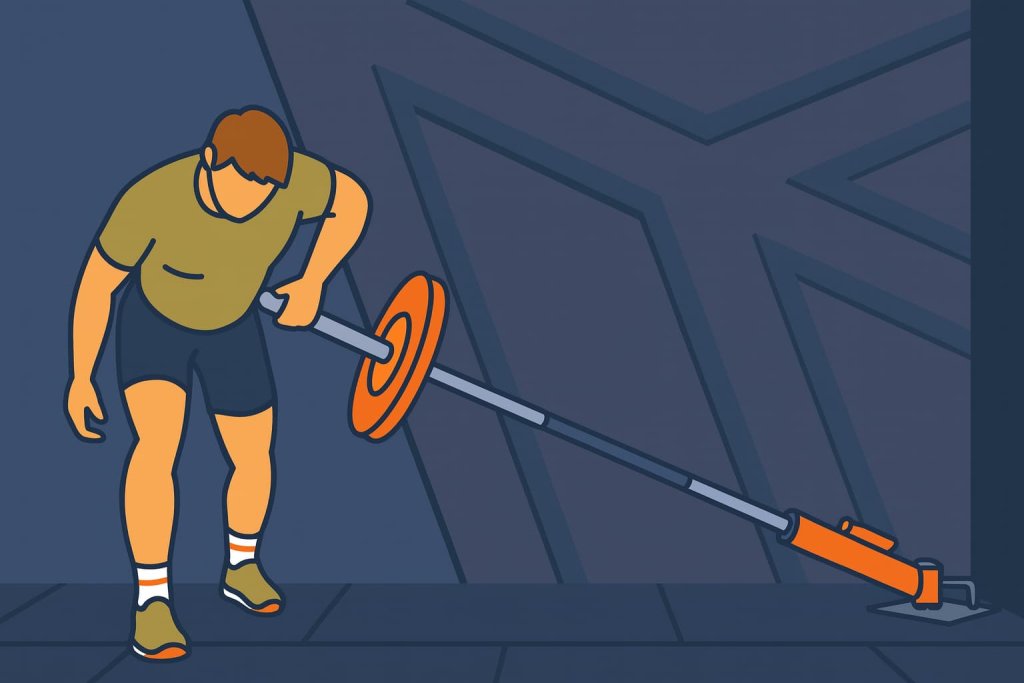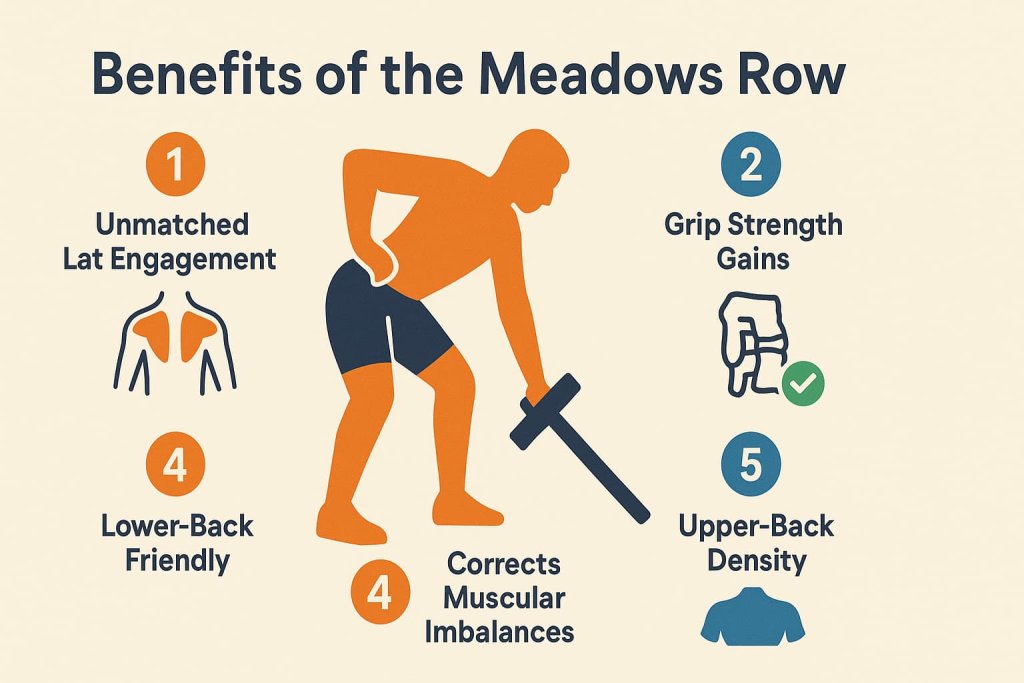The Meadows Row is one of the most effective exercises for building massive, thick lats—especially the hard-to-hit lower portion. Popularized by the late IFBB Pro John “Mountain Dog” Meadows, this unique unilateral row variation targets your back muscles with laser precision while reducing stress on the lower spine.

Understanding how to perform the Meadows Row correctly is key if you want wide, powerful lats and balanced upper-body development. In this guide, we’ll cover the benefits, muscles worked, form tips, common mistakes, and programming strategies so you can integrate it into your training with confidence.
What Is the Meadows Row?
The Meadows Row is a single-arm row variation performed using a landmine setup (or a barbell wedged into a corner). Instead of holding the bar near the knurling, you grip the thick sleeve of the barbell, forcing your grip and forearm muscles to work harder.
You stand in a staggered stance, slightly hinged forward, rowing with one arm while supporting yourself with the other. This position shifts the angle of pull, emphasizing your lower lats and mid-back.
Muscles Worked by the Meadows Row
The Meadows Row is a compound pulling exercise that trains multiple muscle groups:
Primary Muscles
- Latissimus dorsi (lower portion emphasized)
- Rhomboids
- Middle and lower trapezius
- Rear deltoids
Secondary Muscles
- Biceps brachii
- Brachialis and brachioradialis (forearms)
- Erector spinae (spinal stability)
- Core muscles (anti-rotation)
- Glutes and hamstrings (stance stability)
Benefits of the Meadows Row

1. Unmatched Lat Engagement
The angled pull specifically hits the lower lats, an area often underdeveloped with standard rows.
2. Grip Strength Gains
The thick barbell sleeve challenges your forearm and grip strength with every rep.
3. Corrects Muscular Imbalances
Being a unilateral exercise, it ensures both sides of your back develop evenly.
4. Lower Back Friendly
Less spinal compression compared to heavy barbell bent-over rows, making it a great alternative for those with back concerns.
5. Upper-Back Density
Builds thickness in the traps, rhomboids, and rear delts for a more powerful upper body.
How to Perform the Meadows Row (Step-by-Step)
1. Setup
Place one end of a barbell in a landmine attachment or wedge it securely into a corner. Load the free end with plates.
2. Stance & Grip
Stand perpendicular to the bar with your inside foot forward and outside foot back. Hinge forward slightly and grab the sleeve of the barbell with your working hand. Rest your non-working hand on your front thigh for support.
3. Execution
Start with your arm fully extended and shoulders square. Pull the bar toward your hip, leading with your elbow. Squeeze your back muscles at the top. Slowly lower to the starting position for a full stretch.
4. Reps & Sets
8–15 reps per arm, 3–4 sets for hypertrophy.
Common Mistakes to Avoid
- Using Momentum — Keep the movement controlled to ensure full muscle engagement.
- Gripping the Wrong Spot — Always grip the sleeve, not the bar shaft, for correct mechanics.
- Limited Range of Motion — Pull all the way to your hip and fully stretch at the bottom.
- Rounding the Back — Maintain a neutral spine throughout to avoid injury.
Programming Tips
- Frequency: 2–3 times per week, depending on your overall back training volume.
- Pairing: Combine with vertical pulls like pull-ups or lat pulldowns for complete back development.
- Progression: Gradually add weight, but keep perfect form.
- Variation: Try Meadows Rows with a fat grip or pause at the top for extra time under tension.
FAQs About the Meadows Row
1. Is the Meadows Row better than a bent-over row?
For targeting the lower lats and reducing spinal stress, yes. But bent-over rows allow heavier loading for overall back strength.
2. Can beginners do the Meadows Row?
Yes, start light to learn proper form before adding weight.
3. What equipment do I need?
A barbell, plates, and either a landmine attachment or a sturdy corner.
4. Should I use straps for Meadows Rows?
If grip fatigue limits your back work, straps can help, but training without them improves grip strength.
5. Can it replace all my rowing exercises?
Not necessarily—variety ensures balanced development. Use Meadows Rows as part of a well-rounded back program.
Conclusion
The Meadows Row is a powerful, lower-back-friendly rowing variation that can transform your back training. By emphasizing the lower lats, improving grip, and building overall upper-back density, it’s a must-have for anyone seeking a thicker, wider, and more balanced physique.
Try adding the Meadows Row to your next pull workout—you’ll feel the difference from the first set.
